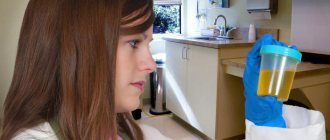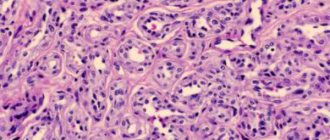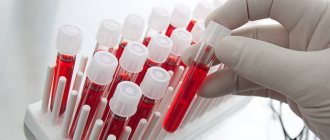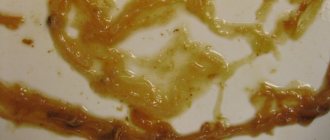From the school anatomy course, everyone knows that each organ in the body has its own structure and composition. For example, blood differs from other fluids in the body by special cells - platelets, leukocytes, erythrocytes. Therefore, when some cells are found out of place, it immediately becomes clear that something is wrong in the body. This is exactly what happens when an analysis finds red blood cells in a child’s urine.
The norm of red blood cells in the urine of a child
According to generally accepted international criteria, a healthy indicator is the absence of red blood cells in a clinical urine test. However, if 1-2 red blood cells in a child’s urine fall into the field of view (the area covered by the microscope eyepiece in the laboratory), then this is not yet a reason to worry. Normally, their number should not exceed 5 units in the field of view when centrifuging the sample. If there are more of them, then they talk about a malfunction of the urinary system.
It must be noted that in infants the number of red blood cells in the urine can be 7 units. This is considered normal, since in the first days of life there is an intensive production of one’s own red blood cells and the replacement of hemoglobin from fetal to normal. In this case, infant jaundice and uric acid diathesis may occur. This condition is considered borderline and will soon cease.
Different laboratories have different classifications for urine tests. Here is a list of analysis criteria accepted in the medical community.
Table of the norm of red blood cells in the urine of a child
| Research method | Norm |
| According to Amburge | < 1000 in minute volume |
| According to Kakovsky-Addis | <1 million in daily volume |
| According to Nechiporenko | < 1000 per 1 ml of urine |
| General urine analysis | up to 2-3 per field of view (in non-centrifuged urine) |
Daily and minute diuresis is calculated based on approximate fluid consumption and depends on the age of the small patient. The calculation formula for a day looks like this: 600 + 100* (A - 1) = N, where A is the child’s age, N is the result, the number of ml of urine per 24 hours. To obtain minute diuresis, the resulting number is divided by 1440 (24 hours * 60 minutes).
Thus, indicators that are outside the normal range indicate the development of kidney and urinary tract disease (abbreviated as UTD). This symptom is called hematuria and currently occurs in 0.5-4% of children.
For your information: Hematuria is the appearance of blood in the urine, which means that the red blood cells in a child’s urine exceed healthy values.
Doctors distinguish two types of this condition – microhematuria and macrohematuria. Microhematuria/erythrocyturia is not noticeable to the naked eye and is determined only by microscopic analysis of urine. According to the degree of severity, they are distinguished:
- insignificant (up to 10-15 elements),
- moderate (20-40 elements),
- significant (40-100 elements) microhematuria.
Microhematuria can occur without other manifestations and can be detected during systematic analysis. Macrohematuria is characterized by a change in the color of children's urine from natural yellow to various shades of red (the color of meat slop, Coca-Cola, cherry color, etc.). This is a very alarming sign that should force parents to immediately consult a doctor.
Healthy children never have gross hematuria. A change in the color of urine is a reason for an immediate visit to the clinic.
Possible causes of increased white blood cell levels
If you are sure that you did everything correctly before and during the collection of the analysis, and the indicators are higher than those defined as the norm, you should definitely examine the child for the presence of hidden inflammatory processes. They can develop in both the urinary tract and the kidneys. The latter is indicated by red blood cells and protein in the urine. The exact reasons for the appearance of such indicators can only be determined by a specialist after conducting all the necessary examinations.
If, after a repeated urine test, the indicators have not changed for the better, then the child needs to be examined for the following problems:
- Infection in the urinary tract, which is more common in girls than boys.
- Kidney infection or pyelonephritis. Often the causes of this disease lie in a previously undiagnosed inflammatory process in the bladder. This situation is more typical for weakened children who have recently suffered an acute acute respiratory infection or have chronic diseases. Red blood cells in the urine indicate such an infection.
- Long patience before urination. As a result, favorable conditions arise for the development of bacterial infection.
- The presence of inflammatory processes on the external genitalia.
- Certain metabolic disorders or any allergic reactions.
- Intertrigo.
If some of these diseases can only be identified by a specialist, then the appearance of, for example, diaper rash, parents will be able to notice themselves.
Many pediatricians, noting an unreasonable increase in temperature, first of all refer for a urine test. Before the results, you should be alert to the following symptoms:
- excessive irritation;
- vomit;
- diarrhea;
- developmental delay.
Together with elevated white blood cells, the norm of which is indicated above, this may become the basis for prescribing an ultrasound, x-ray, cystoscopy and other studies. With their help, the ultimate cause of the pathology is determined, which is subsequently eliminated with the help of various types of treatment.
Increased red blood cells in the urine of a child: causes
Increased red blood cells in the urine in children are most often caused by systemic and renal diseases. Hematuria can result from a number of different disorders, which can be divided into three groups.
The first group of reasons is damage to the vascular walls. As a result of certain processes, the integrity of the veins and other vessels through which blood enters the excretory system is disrupted: first, the blood penetrates the kidneys and its formed components are found in the urine. Diseases that cause this type of damage include:
- kidney tuberculosis;
- hydronephrosis;
- urolithiasis disease;
- phlebeurysm;
- formation and rupture of cysts;
- tumor processes;
- Kidney injuries can also lead to vascular damage.
The second group is violations of the integrity of vascular walls as a result of infectious, immune and toxic damage. In this case, the same thing happens - blood and its components enter the urinary system from damaged vessels, but these injuries are caused by inflammatory processes. These include:
- urinary tract infections, the causative agents of which can be E. coli, streptococci, Klebsiella, Pseudomonas aeruginosa, chlamydia and other microorganisms;
- hemorrhagic fever with renal syndrome, caused by viruses transmitted in the feces of some rodents;
- infective endocarditis, characterized by inflammation of the internal connective membranes;
- glomerulonephritis;
- pyelonephritis;
- hemorrhagic vasculitis and connective tissue vasculitis;
- urethritis;
- cystitis.
The third group of reasons why there may be elevated red blood cells in a child’s urine are hereditary diseases and other disorders that change the characteristics of blood clotting. Also, the appearance of blood components in a urine test may be associated with increased permeability of the membranes of the renal tubules and glomeruli. Among the diseases that cause such conditions are:
- hemophilia;
- periarteritis nodosa;
- thrombotic thrombocytopenic purpura;
- lupus nephritis (glomerulonephritis caused by systemic lupus erythematosus);
- Taking anticoagulants - blood thinning drugs - can also affect the content of red blood cells in children's urine.
All of these are very serious diseases related directly to the child’s urinary system, which require prompt diagnosis. It should be noted that in adults, urological causes of hematuria are most often observed. In children, the renal and systemic nature of this condition predominates.
However, there are other processes that can provoke a condition where red blood cells in a child’s urine are elevated. The causes of hematuria may lie in disruptions in the functioning of other organs and systems of the baby. Oddly enough, some bacterial and viral diseases, such as influenza, typhoid fever, meningococcal infection, and intestinal diseases cause changes in the composition of urine. Purulent-necrotic processes occurring during osteomyelitis, sepsis, abscesses can also provoke hematuria. Rectal or vaginal bleeding may leak into the urine under some circumstances.
The least concern is caused by increased red blood cells in a child’s urine when they are associated with domestic reasons. For example, poor nutrition and severe stress can often cause the presence of formed blood components in a urine test. Sometimes microhematuria in healthy people is caused by heavy physical exertion.
There are also 3 or more red blood cells in a child’s urine when the sample for testing was taken incorrectly. This is especially true for infants, for whom taking urine at home is a rather difficult task. Without special skills or devices for collecting liquid, young parents use various tricks - for example, they pull out a diaper or drain urine using an oilcloth placed under the baby. However, such samples will not give an accurate result, as they will contain additional impurities and contaminants that will disrupt the analysis picture. In order to obtain the most informative sample, it is important to take into account a number of conditions:
- Be sure to maintain hygiene. The parent should wash their hands thoroughly with soap. Before the procedure, you need to wash the child and gently dry him with a clean towel.
- The most accurate results are obtained from an average urine sample. You need to skip the first couple of seconds, and then place the container under the remaining liquid.
- The container must be new and clean. You need to place it under a stream of urine, and not drain the liquid from the pot. Urine residues, dust and other contaminants cannot be completely removed by washing, so these fragments can distort the test results.
- If urine is to be taken from a baby, it is better to purchase a special disposable urine collector. This is a small, sterile plastic bag that is placed on the baby's genitals and attached with an adhesive surface to the baby's body. At the end of the procedure, cut off the tip of the bag and drain the liquid into a prepared container.
- After collecting urine, the genitals should also be rinsed with warm water and blotted with a towel.
When is a urine clinic prescribed?
Frequent urge to urinate may be a reason to undergo a general urine test
Let's look at the situations in which you need to get tested:
- it is important to undergo periodic examinations, especially before visiting a doctor and before vaccination;
- A general urine test must be taken if the baby continues to have a high temperature for five days without manifestations of a viral infection;
- frequent urge to urinate;
- nagging pain in the lumbar region;
- pain when going to the toilet;
- aching pain in the lower abdomen.
- pyelonephritis;
- glomerulonephritis;
There are cases of untrue hematuria, when the increase in red cells in children's urine is false. When conducting an analysis, the doctor can see not the cells themselves, but fragmented plaques of coloring pigments. The cause of this condition may be eating beets, after which the urine turns red.
The color of your urine may also change after taking certain medications. These include Analgin, Aspirin, sulfonamides, phenolphthaleins and vitamin B12.
The presence of red blood cells in the urine of teenage girls is often caused by menstrual bleeding. In this case, urine mixes with the contents of the vagina.
When performing an analysis, what comes into the doctor’s field of vision is not the cells themselves, but the so-called fragmented plaques of coloring pigments. This condition is possible after eating beets. Urine takes on the color of blood. "Analgin", "Aspirin", drugs of the sulfonamide group and vitamin B12 - all these medications can also change the color of urine.
In teenage girls, red blood cells in the urine are usually the result of menstrual bleeding when mixed with vaginal contents.
Diagnosis of diseases accompanied by hematuria
For various diseases, blood and red blood cells in the urine can be the only symptom or appear in combination with other symptoms. Therefore, to formulate an accurate diagnosis, it is necessary to carry out a number of additional tests to determine the source of hematuria.
In addition to the microscopic analysis, the doctor will certainly collect an anamnesis, ask the little patient’s parents about his health, body temperature, daily diuresis (whether the volume of urine has changed or not), sleep patterns, nutrition and other important data. Often, long-term monitoring of the patient’s health and repeated urine tests are required to clarify the nature of the disease. After this, additional studies are prescribed that will give a more detailed picture of the child’s condition. Special urine tests are usually performed. Urine samples are taken for extended studies using the Nechiporenko, Kakovsky-Addis, etc. methods. A test for red blood cells in a child’s urine according to Nechiporenko, like the Kakovsky-Addis test, allows one to identify the presence of inflammatory processes and estimate the number of formed elements not just once, but in a daily range. Two- and three-glass samples allow you to determine the localization of the source of hematuria. If an abnormal sediment is present in all three urine tests, then disorders are present in the upper urinary tract (pyelocalyceal system, kidneys). The presence of sediment in the first analysis indicates damage to the lower pathways. Also, based on such studies, they distinguish:
- initial (initial hematuria) - only the first portion of urine is colored, which indicates pathology in the urethra;
- terminal (final) hematuria - blood is released at the end of the act of urination, which indicates inflammation or tumors of the bladder and prostate in boys;
- total hematuria is characterized by a uniform amount of blood in the urine and indicates possible damage to both the upper and lower urinary tracts.
As for tests, when red blood cells have been diagnosed in a child’s urine, he may be prescribed:
- bacteriological examination of urine (culture);
- detailed analysis and biochemical blood test to exclude blood clotting disorders and anemia;
- ultrasound examination of the abdominal cavity to detect salts, stones, cysts, tumors;
- magnetic resonance imaging (MRI) of the abdominal cavity;
- cystoscopy of the bladder;
- if necessary, consultations with narrow specialists and additional tests are prescribed (kidney biopsy, urography, radioisotope reno- and scintigraphy to determine kidney function, angiography to identify vascular diseases, radiography, etc.)
One of the important factors in determining the disease is the characteristics of the red blood cells themselves found in the urine. In medicine, there are two types of such blood cells:
- altered (leached, dysmorphic) cells;
- unchanged red blood cells.
Unchanged bodies have a regular rounded shape, natural volume and hemoglobin content. The dysmorphic form involves a change in size, shape and normalized hemoglobin content in the red blood cell.
If a phase-contrast analysis revealed altered red blood cells in a child’s urine in an amount of more than 80%, this indicates a glomerular origin of hematuria. More than 80% of unchanged cells indicates the development of tumors, polycystic disease, pyelonephritis, calculosis, cystitis, urethritis, etc.
Sometimes false hematuria occurs in medical practice. In this case, the baby's urine may change color to red, which will cause concern to the mother. However, a urine test will not reveal a critical amount of red blood cells in it. This phenomenon can be explained by the effect of dyes contained in food, or by taking medications that can affect the color of the child’s discharge. Such drugs include acetylsalicylic acid, phenolphthalein, vitamin complexes containing vitamin B12, and sulfonamide drugs. Therefore, before you panic, you need to remember whether the child ate beets, dark berries (blackcurrants, cherries, blackberries), a lot of carrots and rhubarb the day before.
Analysis transcript
The result form received in hand, if it is compiled according to all the rules for conducting a clinical analysis, will contain a lot of important and not very important information.
During the examination, the laboratory technician will evaluate:
- urine color and clarity;
- smell;
- density;
- chemical reaction regarding pH;
- presence or absence of protein;
- glucose level;
- ketone bodies (acetone in urine);
- presence or absence of bile pigments;
- composition of urinary sediment (erythrocytes, leukocytes, casts, epithelial cells, salts).
It depends on what the child ate, drank, and took medications. Some antibiotics turn urine red, and fresh carrots eaten the day before turn orange. But color sometimes also indicates a possible illness. So, in children with diabetes mellitus, the urine is almost transparent, colorless, while in a child with jaundice it is deep yellow. But no one will make diagnoses based on color alone.
Transparency
Normal urine is clear. It begins to become cloudy after a while, as sediment falls out, sometimes in the form of flakes. If the urine that has just been collected is cloudy, this “signals” the presence of leukocytes and a large amount of salts in it. In any case, it is necessary to understand further; it is too early to draw conclusions.
Urine smell
This indicator is not of particular clinical value, and therefore it is often not included in the study form at all. But parents should know that urine that smells like fruit (vitamins) often appears after taking vitamins, as well as in diabetes mellitus.
If the liquid smells strongly of ammonia, it may be a sign of a metabolic disorder.
Density
This indicator is presented in a numerical value, which will symbolize the relative density - the concentration of all other substances in the liquid. Normally, a child up to six months should have values of 1.002-1.004. Child under 1 year - 1.006-1.010. In the urine of a child from 3 to 5 years old, a density of 1.010-1.020 is considered normal. At 7 years of age, the norm will expand slightly - 1.008 - 1.022, and for a child in adolescence - 1.011 -1.025.
Deviations from normal numbers may indicate impaired renal function. Often parents see something completely indistinct in the research form in the “Density” section - “m. m" or "small. m", "little m". This means that the presented sample was insufficient in volume to determine the density, since at least 50 ml of liquid must be poured into a special device.
Normal urine from a completely healthy child gives a slightly acidic reaction. Any deviations in this parameter alert the doctor. If the urine gives a more pronounced or highly acidic reaction, this may be a consequence of eating a large amount of protein, fasting, or having a fever. If the urine gives an alkaline reaction, these are often quite natural consequences of a diet without meat, recent severe repeated vomiting, and chronic diseases of the urinary tract. The norm is pH = 5.0-7.0.
Presence of protein
Normally, there should be no protein in the urine. More precisely, there is so little of it that the reagents are not able to detect traces of the protein. If this is the case, then the laboratory assistant puts “-” in the corresponding column of the form. If a protein is detected, its quantity is determined. The presence of protein is called proteinuria. A functional disorder (which does not require treatment) has completely harmless causes - the child eats a lot of protein, he recently had or still has a fever, he has experienced stress.
Pathological proteinuria may indicate serious kidney disease or circulatory failure.
Glucose in urine
If everything is fine with the child, then there is no sugar in the urine. The exception is when the baby ate a large amount of something sweet before taking the test. In this column, the paper received from the laboratory will contain numbers. Normal values are from 8.8 mmol/liter to 9.9 mmol/liter. Your number being in this range means everything is fine. An increase in this threshold is usually observed in children with diabetes, and a decrease in children with an inflammatory process in the kidney tissue.
Treatment of hematuria
Since hematuria itself is only a symptom, treatment for it does not begin immediately. Until the real cause of the painful condition is determined, the doctor can only prescribe supportive measures. For example, if alarming red blood cells appear in the urine, a child may be prescribed a special diet that excludes foods that are aggressive to the kidneys (for example, table 7 according to Pevzner). In case of severe bleeding, hemostatic drugs may be urgently prescribed. But at the same time, carry out diagnostics.
Treatment of hematuria greatly depends on the etiology of the disease that caused the appearance of increased red blood cells in the child's urine.
Types of deviations
Regarding the number of red blood cells in the urine of children, there are two types of abnormalities:
- Microhematuria. Urine does not change its physical qualities, the color remains the same (up to 20 red blood cells in the field of view).
- Macrohematuria. High concentration of red blood cells, the exact number cannot be calculated. Urine has significant changes in color, up to bright red or brown.
Important! It is worth remembering that the generally accepted norm – up to 4 – is not a benchmark. Due to the individual characteristics of the body, the number of precipitated red blood cells in children can reach 7.
Urinary tract infections
The most common pathogens are Escherichia coli or Escherichia coli. This microorganism causes inflammation and accounts for more than 75% of urinary tract infections in all childhood age groups. Less commonly, the causative agents are other enterobacteria, especially Klebsiella, Pseudomonas aeruginosa and others. The infection can also be caused by streptococci, staphylococci, fungi and mycobacteria.
Infection occurs due to insufficient hygiene of the genital organs, through blood and lymph, during medical procedures, for example, during the insertion of a catheter. Infections occur due to decreased immunity, metabolic disorders, inflammation in neighboring organs, the presence of parasites in the body, abnormal development of the urinary system or genital organs, medical operations, hypothermia, etc. For boys, circumcision is a common cause of infection.
The analysis reveals dysmorphic leukocytes and red blood cells in the child’s urine. Symptoms of these infections may include:
- painful urination, accompanied by burning and stinging;
- frequent urge to go to the toilet, urination in small portions;
- hematuria, change in urine odor;
- temperature increase over 38°C;
- pain in the lower abdomen, lower back, back;
- fever, pallor, weakness;
- refusal to eat, vomiting, diarrhea.
Young children become irritable and often act up and cry.
Patients under two years of age are treated in a hospital; older children can be treated at home under the supervision of a specialist. Antibiotic therapy is most often used. Drugs are selected individually depending on the age of the small patient, the source of infection, and the degree of manifestation of the disease. For severe fever and pain, bed rest is recommended. To eliminate pain and high fever, symptomatic therapy (non-steroidal anti-inflammatory drugs, antispasmodics, etc.) can be prescribed.
The child is prescribed small, frequent meals five to six times a day, and fluid and salt are limited. It is imperative to exclude foods that irritate the epithelium of the urinary system - sour fruits (citrus fruits, kiwi, grapes, etc.), salty and sour vegetables (tomatoes, peppers, sauerkraut), as well as smoked, canned, fried, spicy foods. You should remove carbonated drinks, sour fruit juices and compotes from your diet. The basis of nutrition is protein (boiled meat, fish, poultry) and plant products (fresh vegetables and acceptable fruits), cottage cheese, and milk.
If the pain has stopped, you should gradually increase the amount of fluid consumed in order to prevent damage to the urinary tract from residual salts in the urine, eliminate toxins and bacteria.
As already noted, these infections are subject to mandatory qualified treatment, as they can cause the development of more serious diseases of the child’s urinary system. Among them, the most common are pyelonephritis, cetritis, and cystitis. In 2008, for every 100,000 children, there were approximately 6,000 young patients suffering from these diseases.
What are red blood cells?
Red blood cells are red blood cells that transport gases in the blood (oxygen and carbon monoxide). Their task is to ensure proper metabolism in the blood, which in turn provides nutrition to the cells and tissues of the whole body. They are produced in the human bone marrow.
If the number of these blood cells is insufficient, a person begins to suffer from oxygen starvation, weakness, fatigue, and anemia develops. In absolute health, red blood cells are found exclusively in the blood, but if there are any abnormalities, they can be lost in the urine.
Pyelonephritis in a baby
This is an infectious inflammation that affects the kidneys, in particular the pelvis and calyces. It is caused by bacteria, viruses, protozoa or fungi. The most common infections are Escherichia coli, Proteus and Staphylococcus aureus; Viral pathogens (adenovirus, influenza viruses, Coxsackie viruses) are less common. In chronic pyelonephritis, there may be several pathogens at once.
An infection can get into the kidneys in different ways - through the blood and lymph from other organs and systems (for example, with pneumonia, pathogens enter the urinary system through the blood), or directly from the excretory organs due to insufficient hygiene or medical procedures.
Symptoms of pyelonephritis coincide with signs of infectious inflammation. It can be:
- increased temperature for no apparent reason;
- change in the color and odor of urine;
- lower back pain;
- periumbilical region;
- change in the nature of urination (decrease or increase in frequency of urge and amount of urine, pain during urination);
- puffiness and bags under the eyes;
- loss of appetite;
- weakness;
- pale skin;
- nausea;
- vomit.
Inflammation of the external genitalia and weight loss are possible.
Treatment requires hospitalization in a specialized urological or nephrological department, where the child is prescribed bed rest, a diet with plenty of fluids, and drug therapy. Antibacterial drugs are usually prescribed that are effective against specific pathogens, but are safe for the urinary system. These include antibiotics - penicillins, cephalosporins, etc. Additionally, diuretics, antiseptics, and painkillers are prescribed. If necessary, the drug complex can be supplemented with immune-strengthening drugs and probiotics.
General rules for urine collection
In order for the analysis results to be reliable, it is necessary to properly prepare for the procedure for submitting and collecting the analysis. If we are talking about a general urine test, then it should be collected in the morning after the child wakes up. This should be done on an empty stomach, since the composition of urine may change after eating.
Before collecting urine, the external genitalia must be washed with soap. This is done so that the discharge does not get into the analysis and spoil its results. To prevent the indicators from being elevated, you must use only clean and sterile containers. Any pharmacy sells special containers. If accurate results are important to you, then it is better to use them.
The minimum amount of urine required for analysis is 30 ml. At the same time, it must be delivered to the laboratory no later than 1.5-2 hours from the moment of collection. In some cases, storing liquid in the refrigerator is allowed.
A couple of days before the test, try to exclude from your child’s diet foods that can change the color of urine - beets, carrots, tomatoes. Also, the leukocyte norm may be exceeded after eating foods such as bananas, chocolate, and pineapple. Therefore, try to exclude them from your diet as well.
Be sure to warn if you are taking antibiotics or any other medications. This can greatly affect the result.
Urethritis in children
The disease is an inflammation of the urethral mucosa. It manifests itself in the form of pain, pain, burning during urination, pain in the lower abdomen, increased body temperature and fatigue. Often, the manifestations of the disease differ according to the patient’s gender: boys experience white discharge, burning when urinating, itching of the penis, hematuria, and cloudy urine. Girls more often experience pain during urination and in the lower abdomen, itching of the external genitalia, and frequent urge to go to the toilet.
The causes of urethritis can be infectious or non-infectious. Depending on what caused the inflammation, treatment is selected. If the cause of urethritis is an allergy, antiallergic therapy is prescribed. Depending on the form of the disease (acute, chronic), the type of infectious agent and the individual characteristics of the small patient, various drugs are used. If the source of the disease is bacteria, a course of antibiotics is prescribed. Treatment should be accompanied by bed rest, installation of anti-inflammatory and antibacterial agents into the urethra.
Treatment is usually carried out at home. Hospitalization is required only in acute cases and complications.
Complications
Failure to promptly eliminate the causes that provoked the appearance of red blood cells in a child’s urine can lead to the development of complications. The nature of the complications will depend on the type of disease. The most serious complications develop against the background of prolonged hematuria, which is characterized by the entry of a large amount of blood into the urine.
This can lead to anemia, deterioration of general condition, and failure of the kidneys, which will lead to intoxication of the body. Late diagnosis of serious inflammatory processes and the development of tumors can cause renal failure.
Regardless of age, the presence of red blood cells in the urine of a child requires a thorough examination for early diagnosis of pathologies. Timely and competent treatment guarantees a favorable outcome of any disease.
Cystitis in a child
Cystitis is an inflammation of the mucous membrane of the bladder. More often, this disease occurs in girls, since their urethra is shorter, and it is easier for pathogens to enter the bladder. In addition to the typical methods of infection for genitourinary system infections, the development of the disease can be facilitated by hypothermia, the entry of foreign bodies (sand, stones, etc.) into the organ.
Symptoms of cystitis are similar to other inflammations of the urinary system:
- cramps and pain during a visit to the toilet;
- numerous urges during the day, often false;
- change in urine;
- flakes of mucus appear in it, blood in the last drops;
- it acquires an unpleasant odor.
Sometimes there are signs of intoxication - fever, nausea, lethargy.
Treatment of cystitis includes taking antibiotics that destroy the causative agent of the infection, as well as anti-inflammatory, diuretic and painkillers that will help the body cope with its manifestations. At the same time, physiotherapy, warm compresses can be carried out, bed rest and a plant-milk diet with plenty of fluids can be prescribed.
What do deviations in test results mean?
Inconsistencies between the analysis results and established standards indicate the presence of renal pathologies, diseases of the genitourinary system and some other diseases. This technique is not specific and is currently considered uninformative.
It must be supported by ultrasound, MRI results, the appointment of other studies, and all this must be assessed comprehensively, monitoring the dynamics and taking into account the patient’s complaints.
False responses can occur in several cases:
- Improper and long-term storage and transportation of urine. Collect material in a non-sterile container.
- Ingress of biological secretions from the genital organs into the test material, collection of analysis during menstruation or during the first days after its end.
- Taking medications (antibiotics, antiplatelet agents), diuretics, alcohol.
- Eating hot, spicy foods or food with dyes.
- Conducting research during an acute infectious disease with fever.
- Intense physical activity, stress.
- Laboratory error.
There are many reasons that cause certain deviations in test results, but only the attending physician can make an accurate and final diagnosis.
It is based not only on the norms of urine analysis according to Nechiporenko in adults, but also on the manifestations of the disease, complaints, results of other studies and procedures (ultrasound, computed tomography, blood tests and other urine tests). We can talk about any pathology only after completing a comprehensive examination.
Article design: Mila Friedan
The Nechiporenko examination is carried out by microscopic diagnosis of urine, which reveals:
- erythrocytes - red blood compounds circulating along the blood vessels;
- leukocytes are white blood compounds, their main role in the body is to fight infectious cells;
- casts are compounds formed due to the pathological penetration of protein bodies into the kidneys.
It is difficult to interpret the indicators of cylindrical formations, which is due to their many varieties and dependence on the acidic properties of urine. The alkaline environment of urine prevents their formation by dissolution. The acidic environment of the liquid promotes their reproduction, which is why abstaining from foods that affect acidity is so important.
The norm of leukocytes in the urine of children does not exceed 2 thousand per milliliter of liquid.
The norm of red blood cells when analyzed using the Nechiporenko method is up to a thousand per milliliter of biomaterial.
Cylindrical formations are proteinaceous, epithelial, leukocyte, erythrocyte adherent residues. Casts occur as a result of increased protein content in the urine, leading to proteinuria. Significant release of cylindrical compounds is cylindrouria. For children, the normal number of cylindrical compounds according to Nechiporenko is 20 units per 1 milliliter of liquid.
The norm of indicators in children does not differ from the norm of such organic compounds in an adult.











